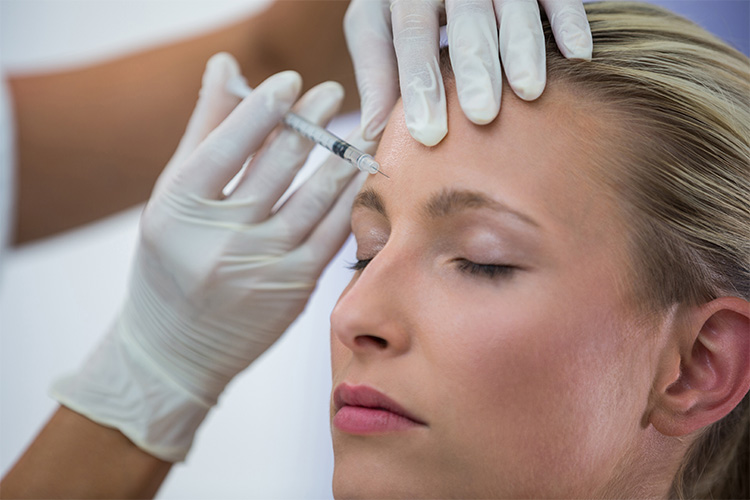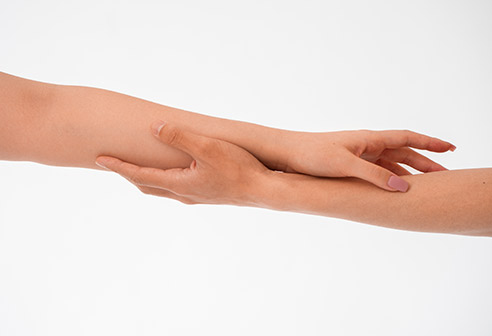
Mesotherapy is a prominent, minimally invasive application in the field of skin health and aesthetics today. This popular method is based on the principle of directly injecting beneficial substances such as vitamins, minerals, amino acids, and hyaluronic acid, which the skin needs, directly under the skin. Especially aiming for skin rejuvenation and renewal, this application, when performed regularly, helps achieve a healthier, more vibrant, and radiant skin tone by providing noticeable improvements in the skin's appearance.
So, what exact benefits does this effective application offer, for which skin problems should it be preferred, and what kind of lasting effects does it leave on the body when applied at regular intervals? In this article, we will detail the advantages of mesotherapy, its application areas, and the results of regular use.
What is Mesotherapy?
Mesotherapy is a procedure in which special mixtures are delivered to the deeper layers of the skin through micro-injections. These mixtures typically consist of essential components that support skin health, such as vitamins, minerals, amino acids, and hyaluronic acid.
The primary aim of the application is to activate the skin's regenerative capacity and achieve a healthier appearance in the targeted area. Mesotherapy, which is quite popular among aesthetic procedures, can be applied to areas such as the face, neck, décolletage, as well as the scalp.
How is Mesotherapy Applied?
Before starting the mesotherapy procedure, the skin area to be treated is meticulously cleaned. Once the skin is sufficiently prepared, the specially formulated mixture is injected in small doses just beneath the skin using very fine needles.
This application generally takes 20 to 30 minutes. After the procedure is completed, temporary effects such as mild redness, sensitivity, or a stinging sensation may be observed in the injected area. However, these side effects usually disappear on their own shortly, and individuals can easily resume their daily routines.
What is the Mesotherapy Recovery Process Like?
The recovery process after mesotherapy is generally fast and problem-free. It is normal for slight redness, sensitivity, or small bruises to occur at the injection sites in the treated area. These bruises usually disappear within 1-2 days.
Since the skin may be more sensitive during this period, it's important to avoid wearing makeup for the first 24 hours and to protect the skin from sun exposure. Drinking plenty of water and keeping the skin well-hydrated after the application also helps speed up recovery.
What are the Benefits of Regular Mesotherapy Application?
Mesotherapy does not work miracles in a single session. For a noticeable improvement in the skin, the application needs to be performed regularly. Mesotherapy, which improves skin quality over time, is an effective method to slow down the signs of aging and give the skin a healthier appearance.
The main benefits of regular mesotherapy application are:
- Skin renewal and increased radiance
Mesotherapy supports the skin cells' self-renewal. As a result, the skin looks more vibrant and younger. - Reduction of fine wrinkles
Because it increases collagen production, fine lines, especially around the eyes, forehead, and lip contours, become less prominent over time. - Moisture balance and elasticity gain
Through hyaluronic acid and similar components in its structure, the skin's ability to retain moisture increases. This way, hydrated skin looks much plumper and younger. - Reduction in spots and tone inequalities
Mesotherapy can help regulate skin tone. The appearance of sun spots, acne scars, and color differences may lighten over time.
Remember: Mesotherapy needs time to show its effects. Patience and consistency are important.
Permanence and Frequency of Mesotherapy Application
Rather than creating miraculous results with a single session, mesotherapy is an application that needs to be repeated at regular intervals to provide a visible and lasting improvement in the skin's appearance. Mesotherapy, which improves skin quality over time, is an effective method for slowing down the signs of aging and giving the skin a healthier, more vibrant appearance.
The frequency of mesotherapy sessions varies depending on the person's skin needs, the desired outcome, and the content of the specific mixture used. Generally, an initial course of 4 to 6 sessions at weekly or bi-weekly intervals is recommended. Following this initial course, monthly or bi-monthly maintenance sessions may be performed to preserve the results and ensure their permanence.
Who Can Get Mesotherapy?
Individuals who want to improve their skin's appearance, maintain moisture balance, or delay the signs of aging can undergo mesotherapy.
The following groups may benefit from mesotherapy:
- Individuals aged 20 and over
- Those experiencing dullness, dryness, or loss of elasticity in their skin
- Those who want to combat fine wrinkles in their early stages
- Those who want to support the care process after chemical peels, laser, or similar skin rejuvenation applications.
- Those who want to even out their skin tone or reduce the appearance of light spots
Mesotherapy is not recommended in the following situations:
- Pregnant and breastfeeding women
- Individuals with active infections or inflammation on the skin
- Those with bleeding disorders or advanced chronic diseases
Before the application, an evaluation by a dermatologist or aesthetic medicine specialist is absolutely necessary, and the person's health status and skin structure should be taken into consideration.
Frequently Asked Questions
How many sessions of mesotherapy should be done?
Generally, 3–6 sessions are recommended.
When do the effects of mesotherapy become visible?
Noticeable improvements usually begin from the 2nd or 3rd session onwards.
Is there any harm if it's not done regularly?
No, if it's not done regularly, only the benefits obtained will decrease. However, the skin may return to its previous state; therefore, continuity is recommended.
How often should it be applied for a permanent effect?
To preserve the obtained results, single session maintenance applications can be done every 4–6 months.



